- Pest Control: How to Keep Your Garden Free of Pests
- Introduction
- Prevention
- Natural Pest Control Methods
- Integrated Pest Management
- Conclusion
- Identify Common Garden Pests
- 1. Aphids
- 2. Slugs and Snails
- 3. Caterpillars
- 4. Whiteflies
- 5. Spider Mites
- Conclusion
- Natural Pest Control Methods
- 1. Attract Beneficial Insects
- 2. Use Companion Planting
- 3. Introduce Birds and Bats
- 4. Use Organic Pest Sprays
- 5. Mulch and Weed Regularly
- 6. Practice Crop Rotation
- 7. Use Traps
- Chemical Pest Control Products
- 1. Insecticides
- 2. Herbicides
- 3. Fungicides
- 4. Rodenticides
- Frost Protection: Keep Your Plants Safe from Cold Weather
- Select Frost-Tolerant Plants
- Provide Insulation
- Water Your Plants
- Use Heat Sources
- Monitor Weather Conditions
- Understanding Frost and Its Effects
- What is Frost?
- Effects of Frost on Plants
- Factors Affecting Frost
- Protecting Your Garden from Frost
- Frost Protection Techniques
- 1. Covering Plants
- 2. Mulching
- 3. Watering
- 4. Using Windbreaks
- 5. Utilizing Heat Sources
- Using Frost Protection Devices
- Introduction
- Frost Blankets
- Hot Caps
- Row Covers
- Portable Heaters
- Conclusion
- Winterizing Your Garden
- 1. Clean Up
- 2. Mulch Your Soil
- 3. Protect Your Perennials
- 4. Prune and Trim
- 5. Drain Garden Hoses
- 6. Move Tender Plants Indoors
- 7. Feed Your Soil
- 8. Protect Your Trees
- 9. Check for Drainage
- 10. Monitor Your Garden
- Preventing Frost Damage to Trees and Shrubs
- 1. Choose frost-resistant plants
- 2. Mulch around the base
- 3. Wrap the trunks
- 4. Water the plants
- 5. Use frost blankets or cloths
- 6. Prune in early fall
- 7. Avoid fertilizing late in the season
- 8. Monitor the weather
- Questions and Answers:
- How can I protect my garden from pests?
- What are some common pests that can damage my garden?
- How can I protect my garden from frost?
- What are some signs that my plants may be infected by pests?
- Are there any organic methods to control pests and protect plants from frost?
- Videos: Learning from Garden Firsts (Q&A)
Gardening can be a rewarding and enjoyable hobby, but it also requires careful maintenance to ensure the health and longevity of your plants. One of the challenges gardeners face is keeping pests at bay, as they can quickly damage or destroy your hard work. Additionally, frost can be a serious threat to your garden during colder months. In this article, we will explore some effective strategies for pest control and frost protection to help you maintain a healthy and thriving garden.
When it comes to pest control, prevention is key. Regularly inspect your plants for signs of pests, such as chewed leaves, wilting, or discoloration. If you notice any issues, take immediate action to prevent further damage. One effective method is to introduce beneficial insects, such as ladybugs or lacewings, which feed on garden pests. You can also use organic pest control products, like neem oil or insecticidal soap, which are safe for your plants and the environment.
Frost can be a common problem for gardeners, especially in colder climates. Frost can damage or kill your plants by freezing the moisture in their cells, causing them to burst. To protect your garden from frost, cover your plants with a protective barrier. You can use blankets, old bedsheets, or special frost cloth. It’s important to cover your plants before nightfall, as frost usually occurs during the coldest part of the night. Additionally, mulching around your plants can help insulate the soil and protect the roots from frost.
By implementing these strategies for pest control and frost protection, you can create a healthy and thriving garden. Regularly monitoring your plants, introducing beneficial insects, and using organic pest control products will help keep pests at bay. Covering your plants with a protective barrier and mulching around them will protect them from frost. With proper care and attention, your garden will flourish and provide you with beautiful flowers, delicious fruits, and bountiful vegetables.
Pest Control: How to Keep Your Garden Free of Pests
Introduction
Pests can cause significant damage to your garden, leading to reduced crop yields and the potential loss of your hard work. However, with proper pest control techniques, you can minimize or eliminate the damage caused by pests, keeping your garden healthy and productive.
Prevention
Prevention is an essential step in pest control. By taking the necessary precautions, you can reduce the risk of pests infesting your garden. Here are some preventive measures to consider:
- Clear any debris: Remove any dead plants, fallen leaves, or other debris from your garden area. These provide hiding places and breeding grounds for pests.
- Maintain proper hygiene: Keep your garden clean and tidy. Avoid leaving tools, pots, or other gardening equipment lying around as they can attract pests.
- Practice crop rotation: Rotate your crops each season to disrupt pest life cycles. This helps to prevent the buildup of pests that may attack specific plants.
Natural Pest Control Methods
Instead of relying on harmful chemicals, consider using natural pest control methods. Here are a few effective techniques:
- Companion planting: Planting certain flowers, herbs, or vegetables together can help repel pests. For example, marigolds can deter aphids and nematodes.
- Beneficial insects: Attracting beneficial insects like ladybugs, lacewings, and praying mantises can help control pest populations. You can do this by planting flowers that provide nectar or by using insect houses.
- Physical barriers: Install physical barriers like nets, fences, or row covers to protect your plants from pests.
Integrated Pest Management
Integrated Pest Management (IPM) is a holistic approach that combines preventive measures, natural pest control methods, and, if necessary, targeted chemical applications. Follow these steps to implement IPM in your garden:
- Monitor: Regularly inspect your plants for signs of pest damage. Identifying pests early allows for a more effective response.
- Identify: Accurately identify the pests you encounter. Different pests require different control methods.
- Evaluate: Consider the extent of the pest problem and the potential damage it can cause. Determine the threshold at which action is necessary.
- Choose control methods: Select the most appropriate control methods based on the specific pest and plant species. Consider non-chemical options first.
- Take action: Implement the chosen pest control methods according to the instructions. Monitor the effectiveness of the measures and adjust as needed.
- Prevention: Continue practicing preventive measures to minimize future pest infestations and maintain a healthy garden.
Conclusion
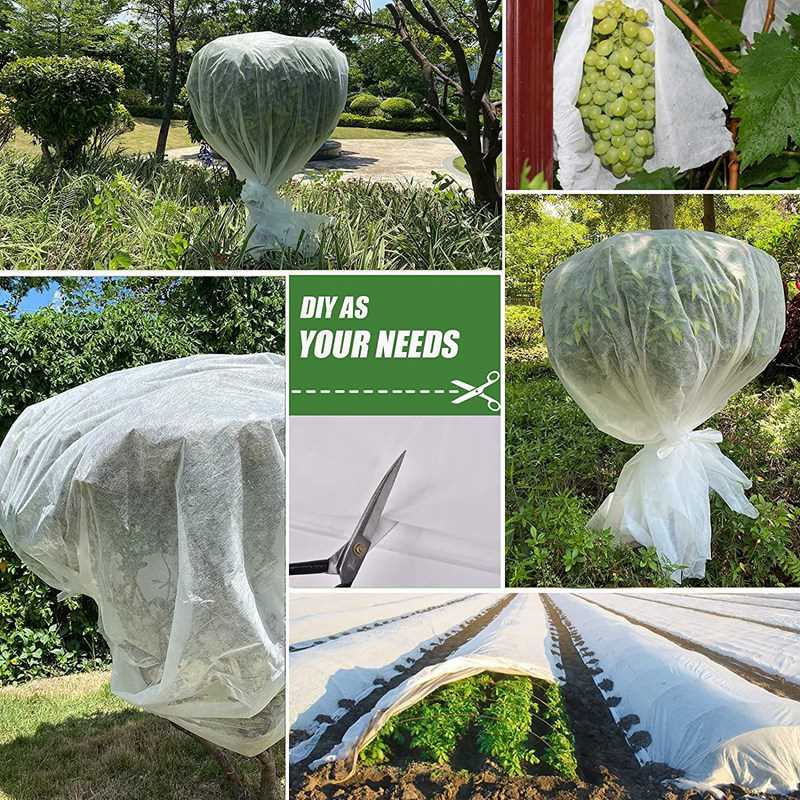
By following these pest control tips, you can keep your garden free of pests and enjoy a healthy crop yield. Remember to prioritize preventive measures, utilize natural pest control methods, and apply integrated pest management techniques when necessary. With a proactive approach, you can ensure the long-term health and productivity of your garden.
Identify Common Garden Pests
1. Aphids
Aphids are small insects that feed on the sap of plants. They are usually green or black in color and can be found in clusters on the leaves and stems of plants. Aphids can cause damage to plants by sucking their juices, which can lead to stunted growth and the spread of diseases. They are attracted to plants with succulent growth and can be controlled by spraying plants with a strong stream of water or by using insecticidal soap.
2. Slugs and Snails
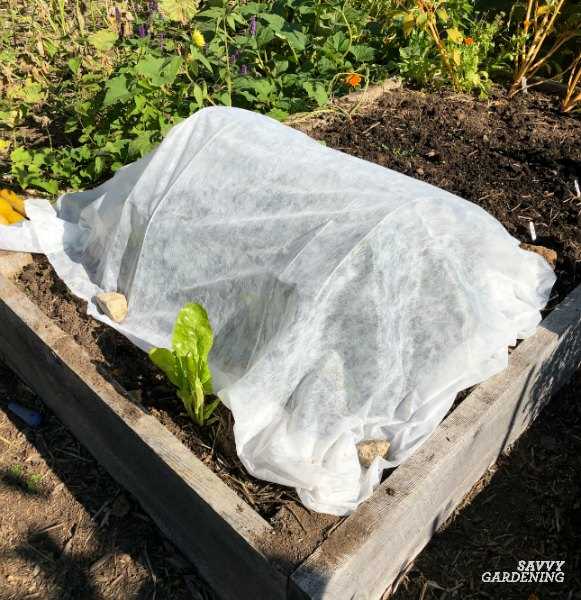
Slugs and snails are common garden pests that can cause damage to plants by eating their leaves, stems, and fruits. They are particularly active during wet and humid conditions. Slugs and snails can be identified by their slimy appearance and their feeding marks on plants. They can be controlled by using physical barriers such as copper tape or by handpicking them from plants in the evening when they are most active.
3. Caterpillars
Caterpillars are the larvae of butterflies and moths and can be found munching on leaves and stems of plants. They can be identified by their soft bodies and multiple legs. Caterpillars can cause significant damage to plants if left unchecked. They can be controlled by handpicking them from plants or by using biological controls such as Bacillus thuringiensis (Bt), which is a natural pesticide specific to caterpillars.
4. Whiteflies
Whiteflies are small, winged insects that can be found on the undersides of leaves. They are white in color and can scatter in large numbers when plants are disturbed. Whiteflies suck the sap from plants and can cause them to become weak and stunted. They can also transmit diseases to plants. Whiteflies can be controlled by using sticky traps or by spraying plants with insecticidal soap.
5. Spider Mites
Spider mites are tiny pests that are difficult to spot with the naked eye. They are usually found on the undersides of leaves and can cause damage to plants by sucking their juices and spinning webs. Spider mite infestations can be identified by the presence of webbing and yellowing or bronzing of leaves. They can be controlled by spraying plants with a strong stream of water or by using insecticidal soap.
Conclusion
Identifying common garden pests is an important step in maintaining a healthy garden. By being able to recognize these pests and their damage, gardeners can take appropriate measures to control and prevent infestations, ensuring the overall health and productivity of their plants.
Natural Pest Control Methods
When it comes to pest control in your garden, it’s important to consider natural methods that are safe for both the environment and your plants. Here are some effective natural pest control methods to keep your garden healthy:
1. Attract Beneficial Insects
One of the best ways to control pests in your garden is by attracting beneficial insects. Ladybugs, lacewings, and parasitic wasps are just a few examples of beneficial insects that prey on pests. Plant flowers such as marigolds, daisies, and fennel to attract these helpful bugs.
2. Use Companion Planting
Companion planting is a technique that involves planting different crops together to naturally control pests. For example, planting garlic next to roses can deter aphids, while planting basil near tomatoes can repel tomato hornworms. Do some research on companion planting to find the best combinations for your garden.
3. Introduce Birds and Bats
Birds and bats are natural predators that can help control garden pests. Install birdhouses and birdbaths to attract birds, and consider putting up a bat box to attract bats. These animals will feast on insects, reducing their numbers in your garden.
4. Use Organic Pest Sprays
If you have a specific pest problem that needs to be addressed, consider using organic pest sprays. These sprays are made from natural ingredients such as neem oil, garlic, and peppermint oil. They are safe for plants and do not harm beneficial insects.
5. Mulch and Weed Regularly
Mulching your garden beds and regularly weeding can help reduce the number of pests in your garden. Mulch acts as a barrier and makes it difficult for pests to reach your plants, while weeding removes food sources and hiding places for pests.
6. Practice Crop Rotation
Rotating your crops each year can help prevent the buildup of pest populations. Pests often target specific plants, so by rotating your crops, you can disrupt their life cycle and reduce their impact on your garden.
7. Use Traps
Traps can be an effective way to control pests in your garden. Sticky traps can be used to catch flying insects, while slug traps can be used to catch slugs and snails. Place the traps strategically around your plants to lure pests away from your crops.
By using these natural pest control methods, you can maintain a healthy garden without the need for harmful chemicals. Remember to monitor your garden regularly and take action at the first sign of pest damage.
Chemical Pest Control Products
Chemical pest control products can be effective in eliminating pests from your garden. However, it is important to use them with caution and follow the instructions provided by the manufacturer. Here are some commonly used chemical pest control products:
1. Insecticides
- Contact Insecticides: These insecticides directly target pests upon contact. They are effective against insects like aphids, mites, and caterpillars.
- Systemic Insecticides: These insecticides are absorbed by plants and provide long-lasting protection against pests. They are commonly used for controlling pests like scale insects and mealybugs.
- Biological Insecticides: These insecticides contain naturally occurring bacteria or viruses that specifically target pests. They are considered safer for the environment and beneficial insects.
2. Herbicides
- Selective Herbicides: These herbicides target specific types of plants, allowing you to control weeds without harming desirable plants.
- Non-Selective Herbicides: These herbicides kill all types of plants, including desirable ones. They are often used for clearing vegetation in large areas.
3. Fungicides
Fungicides are used to control fungal diseases that affect plants. They can be classified into different categories based on their mode of action:
- Contact Fungicides: These fungicides protect plants upon direct contact with the fungal pathogen. They are effective against diseases like powdery mildew and black spot.
- Systemic Fungicides: These fungicides are absorbed by plants and provide internal protection against fungal diseases. They are commonly used for diseases like rust and blight.
- Protectant Fungicides: These fungicides create a protective barrier on the plant surface, preventing fungal spores from germinating and causing disease.
4. Rodenticides
Rodenticides are used for controlling rodents like rats and mice. It is important to handle and use these products with caution, as they can be harmful to humans and pets if not used properly.
When using chemical pest control products, always read and follow the instructions provided on the product label. It is important to use the recommended protective gear and avoid using the products in excessive amounts. Additionally, consider alternative pest control methods and integrated pest management strategies to minimize the use of chemicals in your garden.
Frost Protection: Keep Your Plants Safe from Cold Weather
Frost can be a major threat to your plants, especially if you live in an area with cold and frosty winters. To ensure that your plants stay healthy and survive the cold weather, it’s important to take steps to protect them from frost damage. Here are some tips to help you keep your plants safe:
Select Frost-Tolerant Plants
One of the best ways to protect your garden from frost is to choose plants that are frost-tolerant. These plants are able to withstand cold temperatures and will be less likely to be damaged by frost. Some common frost-tolerant plants include winter vegetables like kale, broccoli, and Brussels sprouts, as well as evergreen shrubs like boxwood and holly. Make sure to research the frost tolerance of the plants you are planning to grow and choose accordingly.
Provide Insulation
Insulating your plants can help protect them from frost. You can use materials such as frost blankets, burlap, or even old bedsheets to cover your plants when frost is forecasted. Make sure to secure the materials properly to prevent them from blowing off in the wind. This extra layer of insulation will help trap heat and protect your plants from the freezing temperatures.
Water Your Plants
Watering your plants before a frost can help protect them from the cold. Wet soil retains heat better than dry soil, so watering your plants before a frost can help keep the soil warmer and provide some protection to the roots. However, make sure to water your plants during the day so that the moisture has a chance to evaporate before temperatures drop at night. Wet foliage can increase the risk of frost damage, so it’s important to strike a balance.
Use Heat Sources
You can also use heat sources to protect your plants from frost. Some options include using heat lamps, stringing outdoor lights, or using outdoor heaters. Place the heat source near the plants you want to protect and make sure to follow safety precautions. Be mindful of any flammable materials and be cautious if using electrical equipment outdoors.
Monitor Weather Conditions
Stay informed about weather forecasts and monitor temperature changes closely during the colder months. Knowing when frost is predicted will allow you to take necessary precautions and protect your plants in advance. Keep an eye out for frost warnings and adjust your protection measures accordingly.
Remember, every plant has its limits, and extreme cold can still cause damage even with the best protection measures. However, by following these tips, you can significantly improve the chances of your plants surviving the winter and thriving in the spring.
Understanding Frost and Its Effects
Frost is a natural occurrence that happens when the temperature drops below freezing point, causing water on plants and surfaces to freeze. It can have detrimental effects on a garden, especially on delicate plants and crops. Understanding frost and its effects can help gardeners take appropriate measures to protect their plants.
What is Frost?
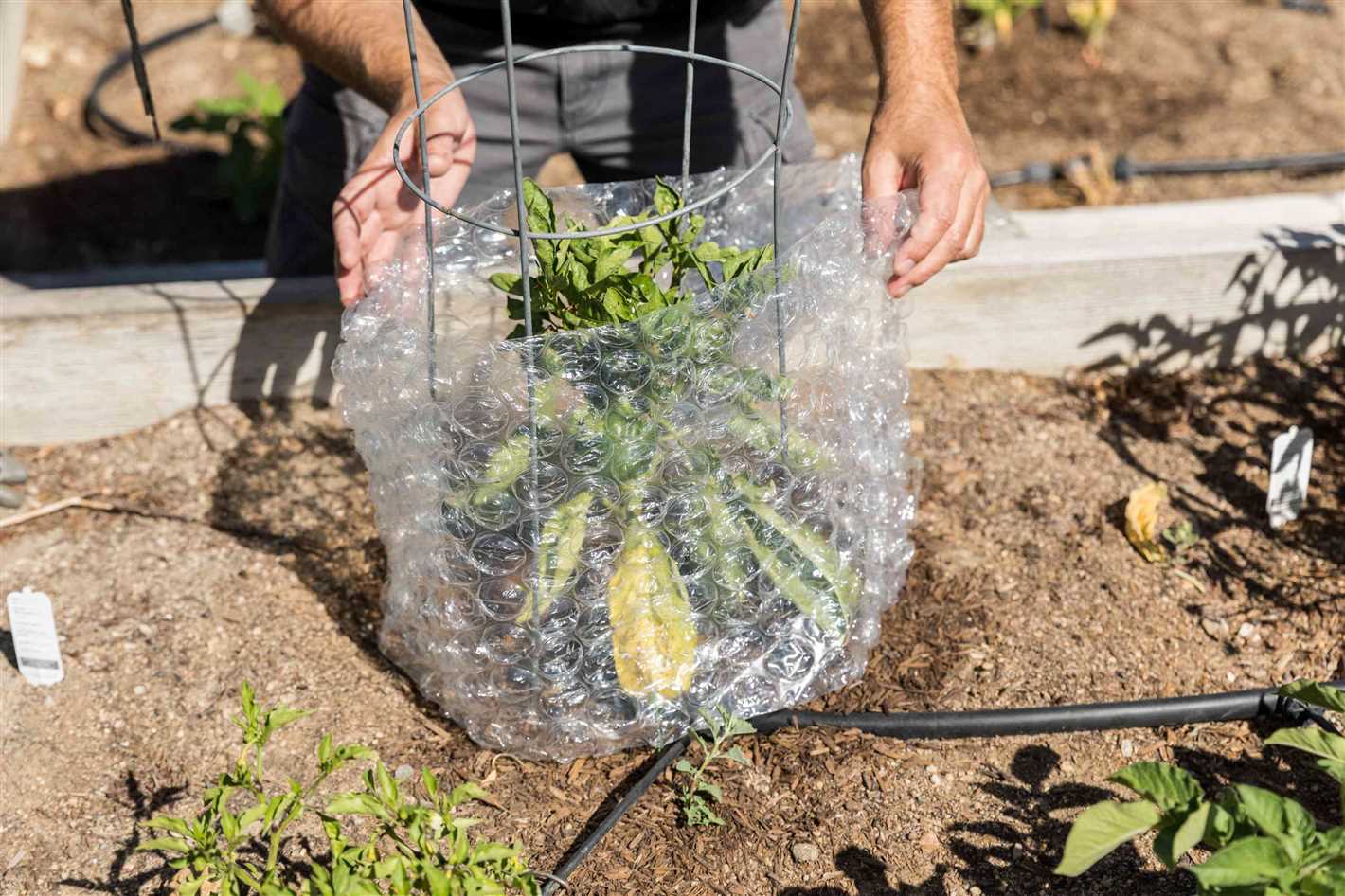
Frost is the formation of ice crystals on surfaces due to the freezing of water vapor in the air. It occurs when the temperature drops below 32 degrees Fahrenheit (0 degrees Celsius).
Effects of Frost on Plants
Frost can be damaging to plants in various ways:
- Frost Burn: Frost can cause burning of plant tissues, resulting in wilting and discoloration.
- Cell Damage: Ice formation inside plant cells can rupture cell walls, leading to irreversible damage.
- Stunted Growth: Frost can slow down or halt the growth of plants, affecting their overall development.
- Killing of Tender Plants: Frost can kill delicate plants that are not able to withstand freezing temperatures.
Factors Affecting Frost
Several factors can influence the occurrence and severity of frost:
- Temperature: The temperature drop below freezing point is the primary factor for frost formation.
- Humidity: High humidity levels increase the likelihood of frost because moisture in the air freezes at a higher temperature.
- Wind: Wind can prevent frost formation by disrupting the formation of cold air pockets near the ground.
- Cloud Cover: Clouds act as a blanket, trapping heat and preventing the ground from cooling rapidly, reducing the chances of frost.
Protecting Your Garden from Frost

To protect your garden from frost, you can take the following measures:
- Cover Plants: Use blankets, sheets, or specially designed frost covers to protect tender plants from direct contact with frost.
- Watering: Water the garden before the expected frost as moist soil retains heat better than dry soil.
- Mulching: Applying a layer of mulch around plants can help insulate the soil and protect the plant’s roots.
- Move Potted Plants: If possible, move potted plants indoors or to a protected area to shield them from frost.
By understanding the nature of frost and its effects on plants, gardeners can implement preventive measures to minimize its impact and keep their gardens healthy.
Frost Protection Techniques
Frost can be damaging to plants and can result in the loss of crops and damage to delicate flowers. However, there are several techniques that can be employed to protect your garden from the effects of frost.
1. Covering Plants
One of the most common methods of frost protection is to cover plants with various materials to prevent them from being exposed to the freezing temperatures. Using fabrics, such as burlap or frost blankets, can create a protective barrier around the plants. Make sure to secure the covering tightly to the ground to create an enclosed environment.
Additionally, you can use plastic sheets or tarps to cover larger areas or rows of plants. These materials will provide insulation and help trap heat from the ground, keeping the plants warmer.
2. Mulching
Mulching is another effective technique for frost protection. Adding a layer of organic mulch, such as straw or leaves, around the base of plants can help insulate the soil and prevent frost from penetrating deeper into the ground. The mulch acts as a blanket, trapping heat and protecting the root system.
It’s important to apply the mulch after the ground has cooled down as it can help retain the heat accumulated during the day.
3. Watering
Believe it or not, watering your plants before a frost can actually provide some protection. As water freezes, it releases a small amount of heat. By watering your plants in the evening or early morning before the expected frost, you can help raise the temperature around the plants.
Be careful not to overwater, as excessive moisture can lead to other issues, such as root rot or fungal diseases.
4. Using Windbreaks
Wind can exacerbate the effects of frost by stripping plants of their protective layer of warm air. One way to mitigate this is by using windbreaks, such as fences, walls, or even rows of tall plants, to create a barrier and block the wind.
Position the windbreaks on the windward side of your garden or individual plants to redirect the airflow and reduce the chance of frost damage.
5. Utilizing Heat Sources
In extreme cases, when the frost is particularly severe, additional heat sources can be used to protect plants. This can include using outdoor heaters, heat lamps, or even incandescent Christmas lights. These heat sources can be placed strategically to provide localized warmth and prevent frost damage.
Take precautions when using heat sources to avoid fire hazards or electrical accidents.
By employing these frost protection techniques, you can help safeguard your garden and ensure the health and vitality of your plants, even in cold winter conditions.
Using Frost Protection Devices
Introduction
When the temperature drops, frost can be a serious threat to your garden. Frost can damage or kill plants, especially delicate ones that are not adapted to cold temperatures. However, there are several frost protection devices available that can help you safeguard your plants and ensure their survival during cold spells.
Frost Blankets
One of the most common and effective frost protection devices is a frost blanket. These blankets are made from materials that can insulate plants and prevent frost damage. They come in different sizes and can be easily draped over individual plants or entire beds. Frost blankets work by trapping heat from the ground, creating a microclimate that is warmer than the surrounding air.
Hot Caps
Hot caps are individual protective covers that fit over the top of plants. They are typically made from materials such as plastic or fabric and help create a greenhouse effect. The hot cap traps heat and provides insulation, protecting vulnerable plants from freezing temperatures. Hot caps are particularly useful for protecting young or fragile plants.
Row Covers
Row covers are large sheets of fabric that can be laid over rows of plants. They are commonly used in vegetable gardens and help protect entire rows of crops from frost. Row covers can be made from lightweight materials that allow air and moisture to circulate while still providing frost protection. They are easy to install and can be left on for extended periods without causing harm to the plants.
Portable Heaters
In areas with very cold temperatures, portable heaters can be used to protect plants from frost. These heaters are designed to emit heat and raise the temperature in a localized area. However, it’s important to exercise caution when using portable heaters, as they can be fire hazards. Follow the manufacturer’s instructions and never leave portable heaters unattended.
Conclusion
Using frost protection devices is an effective way to safeguard your plants from frost damage. Frost blankets, hot caps, row covers, and portable heaters can all help create a warmer microclimate and protect delicate plants from freezing temperatures. Choose the appropriate device for your specific needs and follow the instructions for installation and use. With the right protection, you can ensure the health and survival of your garden even during the coldest months of the year.
Winterizing Your Garden
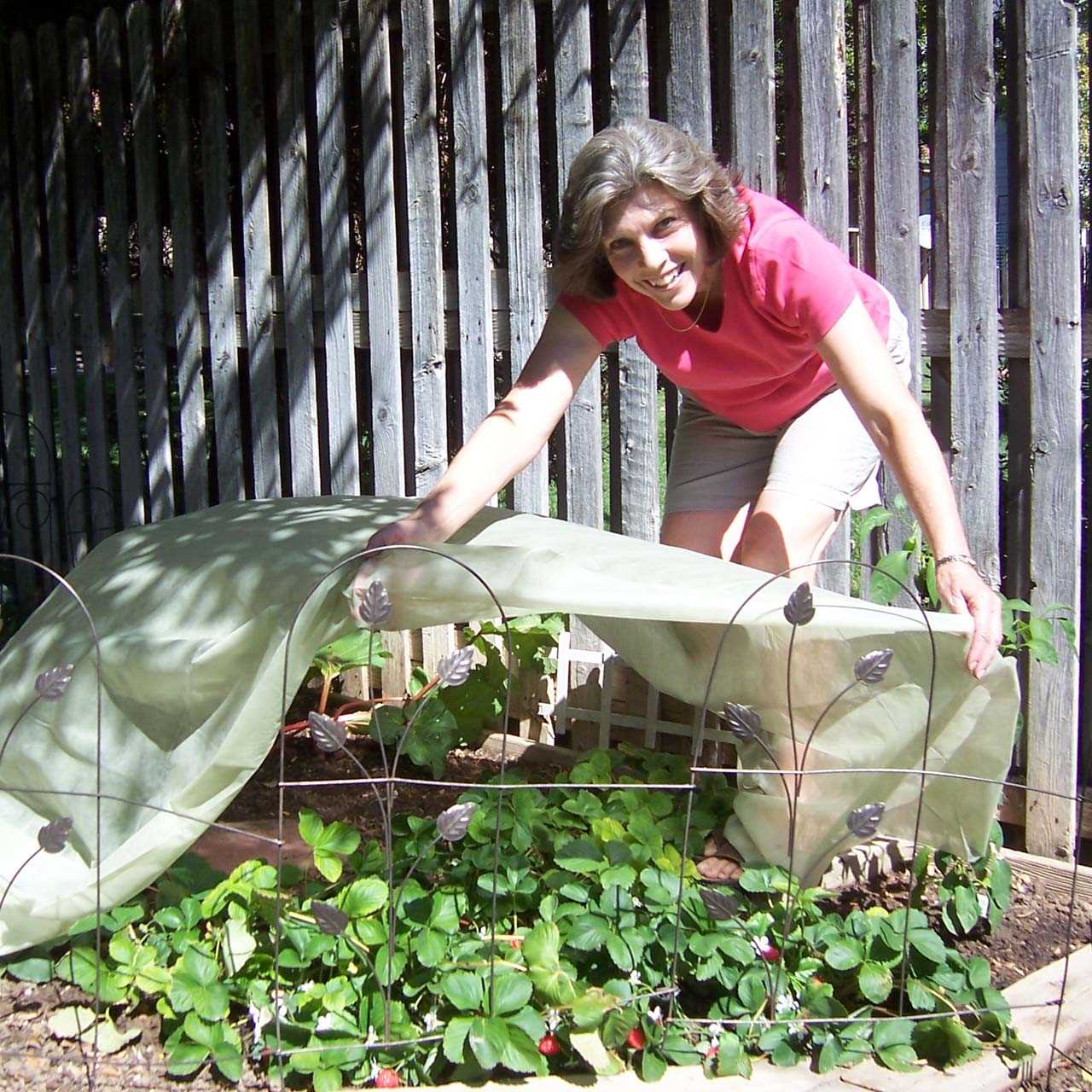
As the winter season approaches, it is important to take steps to protect your garden from the cold temperatures and potential frost damage. By winterizing your garden, you can ensure that your plants and soil are healthy and ready for the upcoming spring. Here are some tips on how to winterize your garden:
1. Clean Up
Start by cleaning up your garden, removing any fallen leaves, dead plants, and debris. This will help reduce the chances of diseases and pests taking hold during the winter months.
2. Mulch Your Soil
Apply a layer of mulch to your soil to help insulate and protect the roots of your plants. This will also help retain moisture in the soil during the winter.
3. Protect Your Perennials
Cover your perennial plants with a layer of burlap or frost cloth to provide insulation and protect them from frost. Make sure to secure the coverings to prevent them from blowing away in the wind.
4. Prune and Trim
Prune any dead or damaged branches from your trees and shrubs. This will not only improve the appearance of your garden, but also help prevent any potential damage from heavy snow or ice buildup.
5. Drain Garden Hoses
Before the first freeze, make sure to drain and store your garden hoses. This will prevent them from freezing and potentially bursting, which could lead to water damage.
6. Move Tender Plants Indoors
If you have any tender plants that are not frost-hardy, consider moving them indoors or to a sheltered area to protect them from the cold temperatures.
7. Feed Your Soil
Before winter sets in, apply a layer of compost or organic fertilizer to your garden beds. This will help replenish the nutrients in the soil and provide a healthy foundation for your plants in the spring.
8. Protect Your Trees
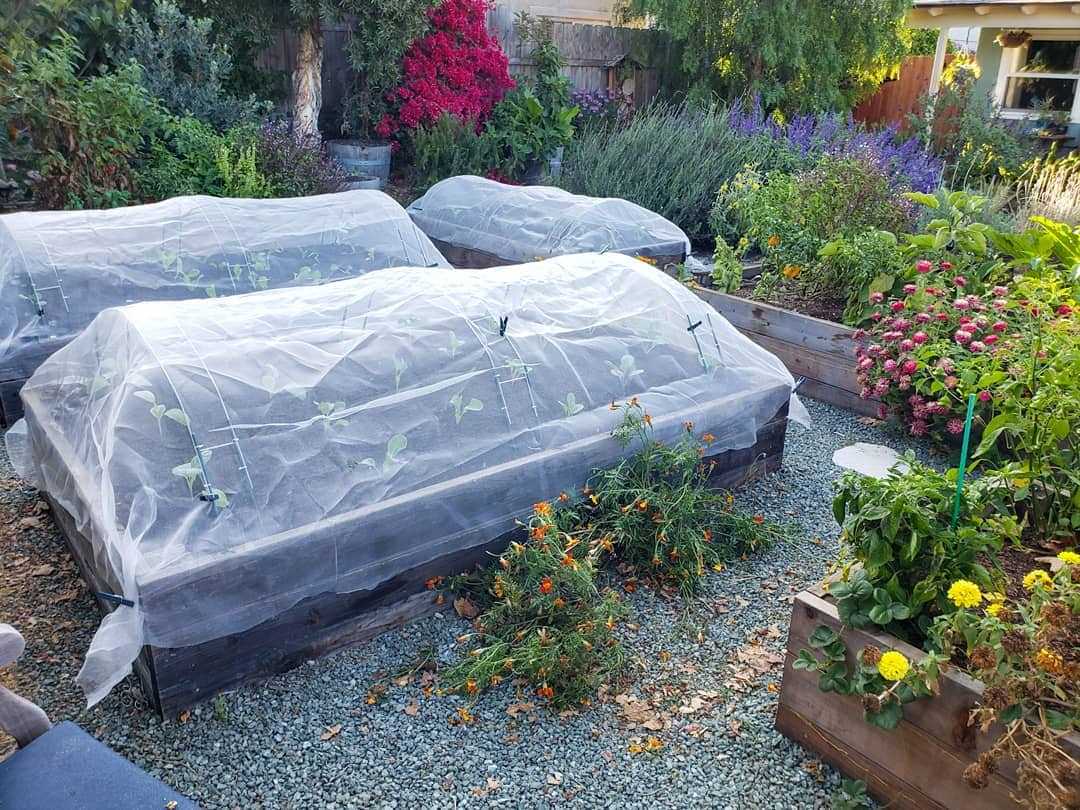
Wrap the trunks of young trees with tree wrap to protect them from sunscald, frost cracking, and damage from critters. This will also help prevent pests from overwintering in the bark.
9. Check for Drainage
Make sure your garden beds and containers have proper drainage to prevent water from pooling and causing root rot. Consider raising container plants off the ground to improve airflow and drainage.
10. Monitor Your Garden
Throughout the winter months, periodically check on your garden to ensure that everything is in good condition. Remove any fallen branches or debris that could potentially cause damage to your plants.
By taking the time to winterize your garden, you can ensure that your plants and soil are protected during the cold winter months and ready for a healthy spring growth.
Preventing Frost Damage to Trees and Shrubs
Frost can be detrimental to the health of trees and shrubs in your garden. It can cause significant damage to the plant tissues and even kill them. However, there are steps you can take to prevent frost damage and protect your garden from the cold temperatures.
1. Choose frost-resistant plants
One of the best ways to prevent frost damage is to choose plants that are naturally resistant to cold temperatures. Some plants are more tolerant of frost and can withstand lower temperatures without suffering damage. Research which plants are suitable for your region’s climate and choose them for your garden.
2. Mulch around the base
Applying a thick layer of organic mulch around the base of the trees and shrubs can help insulate the soil and protect the roots from freezing temperatures. Mulch also helps retain moisture in the soil, which is beneficial during winter when water can easily evaporate from the ground.
3. Wrap the trunks
Wrap the trunks of young or vulnerable trees with burlap or frost blankets to provide extra insulation and protection from frost. This can help prevent the bark from splitting or cracking due to freezing temperatures.
4. Water the plants
Watering the plants before a frost event can help protect them from damage. Moist soil retains heat better than dry soil, so water the plants a day or two before the expected frost to ensure that the soil is adequately hydrated.
5. Use frost blankets or cloths
If you anticipate a frost, cover the trees and shrubs with frost blankets or cloths. These protective covers trap heat from the ground and create a microclimate around the plants, preventing frost from settling on the foliage.
6. Prune in early fall
Pruning your trees and shrubs in late summer or early fall can help remove any dead or damaged branches that could be more susceptible to frost damage. Pruning also promotes proper airflow and sunlight penetration, which reduces the risk of frost damage.
7. Avoid fertilizing late in the season
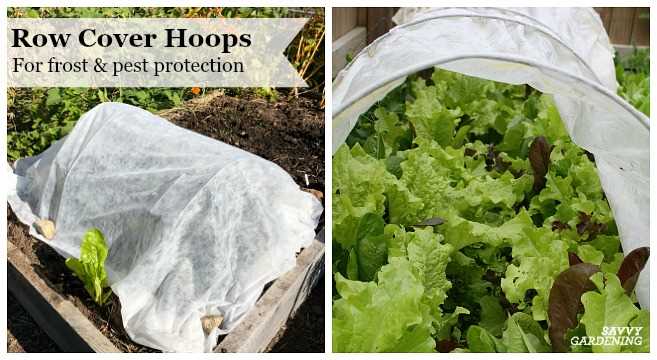
Avoid applying fertilizer to your plants late in the growing season. Late-season fertilization can stimulate new growth, which is more vulnerable to frost damage. Instead, focus on providing your plants with adequate nutrients earlier in the year.
8. Monitor the weather
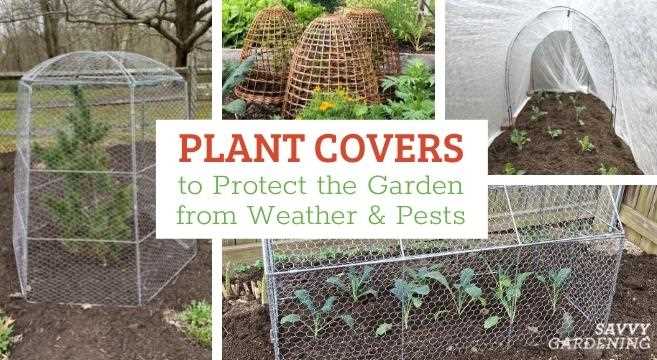
Stay informed about the weather conditions in your area and be prepared for sudden temperature drops. Keep an eye on weather forecasts and take necessary precautions, such as covering your plants with frost protection measures, if frost is expected.
By implementing these preventative measures, you can protect your trees and shrubs from frost damage and help them thrive throughout the winter months.
Questions and Answers:
How can I protect my garden from pests?
There are several ways to protect your garden from pests. One effective method is to use natural predators, such as ladybugs, to control insects. You can also use physical barriers, such as mesh netting, to keep pests out of your garden. Alternatively, you can make your own organic pest repellents using ingredients like garlic, hot peppers, and soap. Regularly inspecting your plants for signs of pests and taking immediate action can also help prevent infestations.
What are some common pests that can damage my garden?
There are several common pests that can damage your garden. Some of these include aphids, which are small insects that feed on plant sap, and slugs, which can chew holes in leaves and fruit. Other common pests include caterpillars, snails, and whiteflies. These pests can cause significant damage to your plants if not controlled.
How can I protect my garden from frost?
There are several ways to protect your garden from frost. One option is to cover your plants with frost blankets or row covers, which provide insulation and protection from freezing temperatures. Another method is to water your plants before a frost, as the water can act as a protective layer of insulation. You can also use mulch to cover the soil around your plants, which helps to lock in heat and protect the roots.
What are some signs that my plants may be infected by pests?
There are several signs that your plants may be infected by pests. These include yellowing or wilting leaves, chewed or distorted foliage, and stunted growth. You may also notice the presence of pests themselves, such as aphids on the underside of leaves or caterpillars on the stems. If you notice any of these signs, it’s important to take action to prevent further damage to your plants.
Are there any organic methods to control pests and protect plants from frost?
Yes, there are several organic methods to control pests and protect plants from frost. For pest control, you can use organic insecticides made from natural ingredients like neem oil or pyrethrum. You can also encourage beneficial insects, such as ladybugs and lacewings, to establish in your garden to control pests. To protect plants from frost, you can use organic mulches like straw or shredded leaves, which provide insulation. Additionally, planting frost-resistant varieties and providing proper care to your plants can also help protect them from frost.







